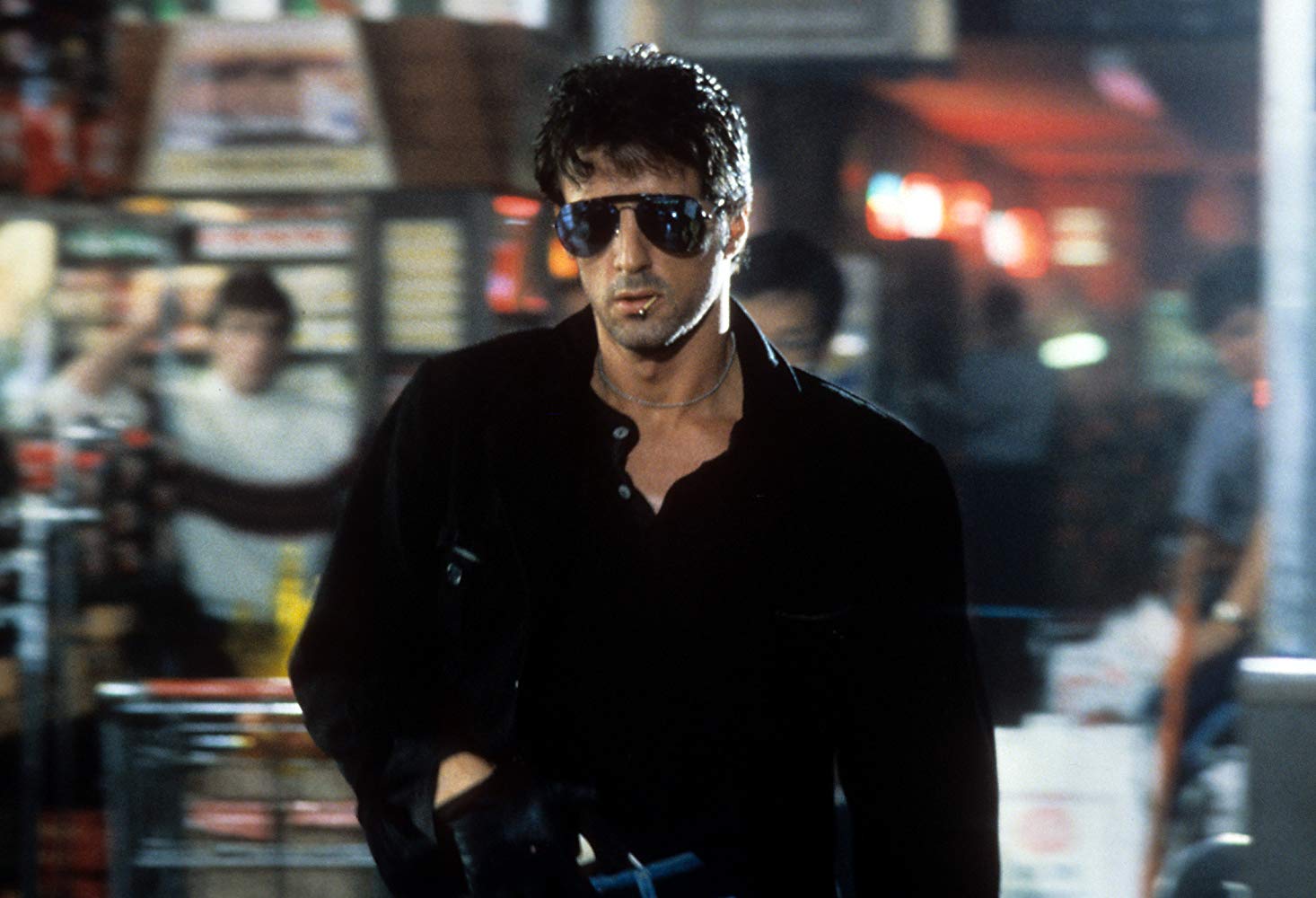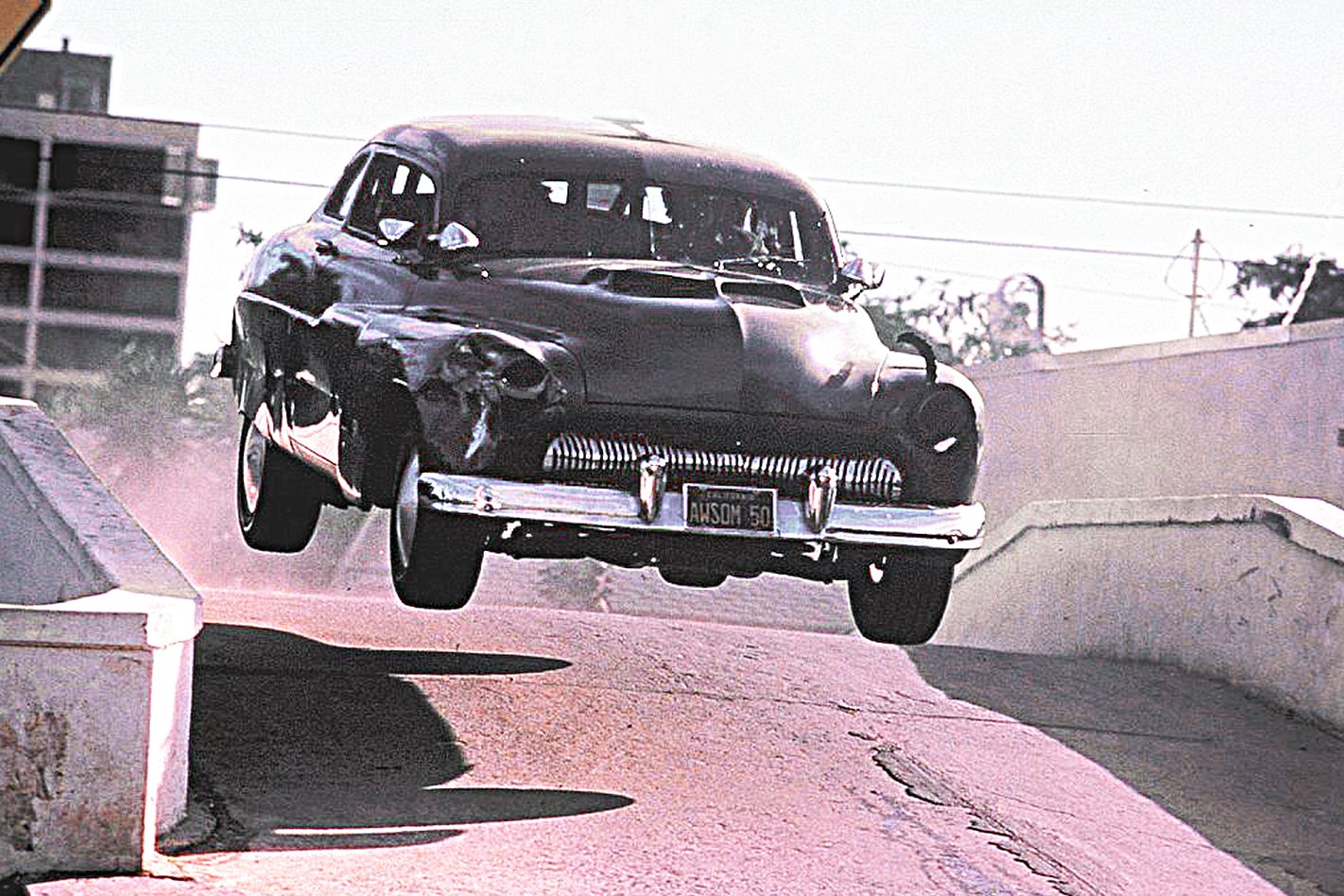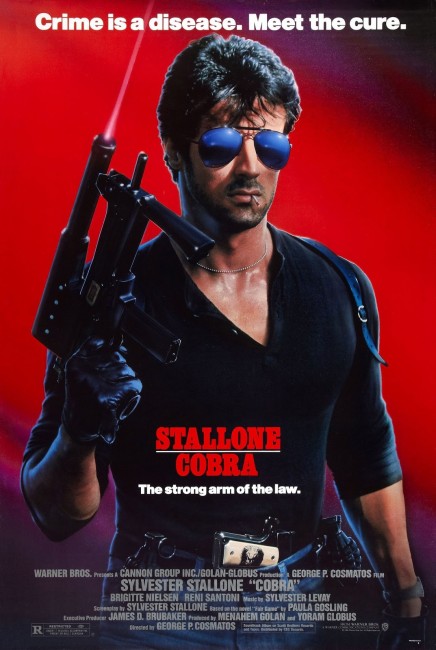Crew
Director – George P. Cosmatos, Screenplay – Sylvester Stallone, Based on the Novel Fair Game by Paula Gosling, Producers – Yoram Globus & Menahem Golan, Photography – Ric Waite, Music – Sylvester Levay, Special Effects – Philip Cory, Makeup – Steve Abrums & Leonard Engleman, Production Design – Bill Kenney. Production Company – Cannon Films.
Cast
Sylvester Stallone (Lieutenant Marion ‘The Cobra’ Cobretti), Brigitte Nielsen (Ingrid Knudsen), Reni Santoni (Sergeant Tony Gonzales), Andrew Robinson (Detective Monte), Lee Garlington (Nancy Stalk), Brian Thompson (The Night Slasher), Art La Fleur (Captain Sears)
Plot
The city is plagued by a series of random killings. The media nickname the killer ‘The Night Slasher’, however The Night Slasher is an organized army. Police lieutenant Marion ‘The Cobra’ Cobretti is a member of the Zombie Squad, a special unit that take on the dirtiest, toughest jobs that no other cops want. Cobretti pleads to be allowed to break the rules to apprehend the Night Slasher army. When model Ingrid Knudsen becomes the only witness to identifying one of the killers, Cobretti goes on the run with her, taking on the entire Night Slasher army in the process.
Rambo: First Blood II (1985) was an enormous hit, even more so than its predecessor First Blood (1982). Rambo could in many ways be said to be the point when the modern action movie started to coalesce. It is where Sylvester Stallone became characterised as a mean, monosyllabic anti-hero and became a model of the action hero for the 1980s and beyond. Stallone and Rambo director George Pan Cosmatos then reteamed for Cobra, which can clearly be seen as an attempt to conduct an urban Rambo.
Cobra is a brutal and violent film. It has an unflinchingly fascist outlook that makes its obvious inspiration, the original Dirty Harry (1971), look like a socialist tea party. Actually, it is all rather entertaining. There is an hysterical opening where Sylvester Stallone’s gravel monotone states the number of murders and rapes per day in the US before he turns and fires his gun into the camera. The first scene opens with a psycho holed up in a supermarket with hostages; Stallone skids in in his car, emerging into posed closeup in mirrorshades and unshaven chin while chewing on a match-stick, and then heads in to find the killer and with unruffled cool pops a tab of beer and takes a sip before throwing it to divert the killer. One-liners quickly abound, all delivered by Stallone in a humourless monotone and with minimal widening of the mouth – “What’s happening?” “Just another asshole woke up hating the world”. “I’ll blow the whole place up,” the psycho threatens, to which Stallone replies “Go ahead – I don’t shop here.” Finally facing the psycho off, he taunts – “You’re the disease, I’m the cure.” It is a terrific opening – nothing else in Cobra matches its level of pure pretension.

George Pan Cosmatos directs well. The middle of the film contains one of the most riveting car chase sequences ever staged – with Sylvester Stallone in his gun-metal grey tank of a car (a customised 1950 Mercury Monterrey) driving one-handed, wielding a machine-gun in the other; doing 180 degree handbrake skids to come around driving backwards in order to shoot at vehicles tailing him; crashing out of the first story of a carpark building and through cordons of exploding trucks; cars jumping over a series of humpback bridges and sparking as they brush against power-lines overhead; ending in Stallone crashing his car in a 180 degree mid-air horizontal roll as it smashes through a grounded boat.
The righter-than-right attitude to law enforcement could be highly offensive – if one could take the film seriously. Many people did and Cobra was universally reviled – it won Worst Picture, Worst Screenplay, Worst Actor and Worst Actress at that year’s Golden Raspberry Awards. However, it is a film that is impossible to take seriously with the straw figures that the script (which Sylvester Stallone penned himself) sets up. Stallone sets out to take on the liberal law courts: “Why can’t they put people away?” Brigitte Nielsen asks. “Tell that to the judge,” is Stallone’s answer, “We put ’em away, they let ’em out.”

Yet for all Stallone’s ravings about the evils of the liberal-minded justice system, one might note that all the extreme violence is ultimately hypocritically directed toward defending a trial witness, in other words the thrust of the whole story is one that by implication regards the courts as honourable arbiters of justice.
The most interesting moment in the film comes in the climactic confrontation between Sylvester Stallone and psycho Brian Thompson, with Thompson taunting Stallone with perfect reason, “The courts are civilised, they’ll call me insane,” and invoking him to break the law and deliberately kill him. In Stallone’s code of fascist ethics, it is a moment of character choice that works convincingly.
Cobra is certainly the best film that George Pan Cosmatos has ever made in an otherwise largely undistinguished career. Cosmatos’s other genre films are the disaster movie The Cassandra Crossing (1976) about a plague-born train; Of Unknown Origin (1983) concerning a battle between a man and a highly intelligent rat; and the underwater monster movie Leviathan (1989).
Trailer here


